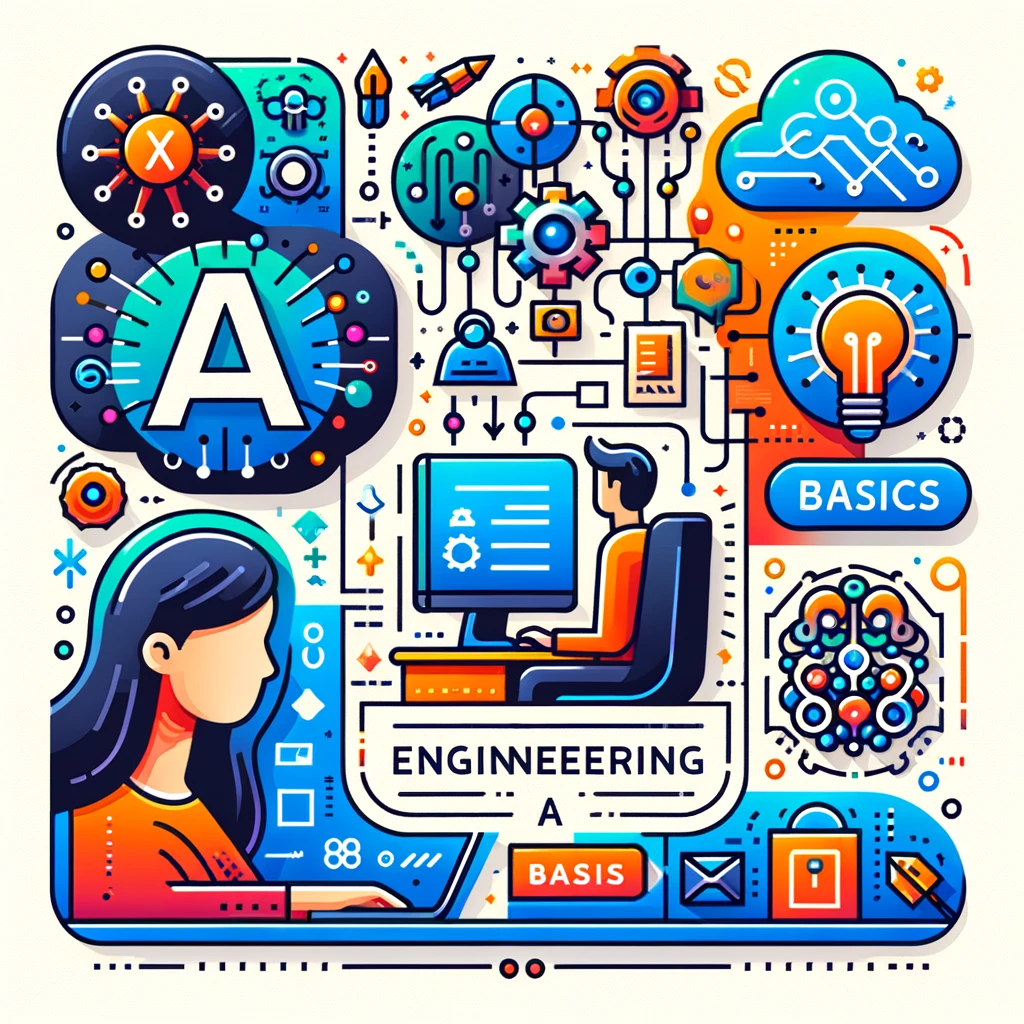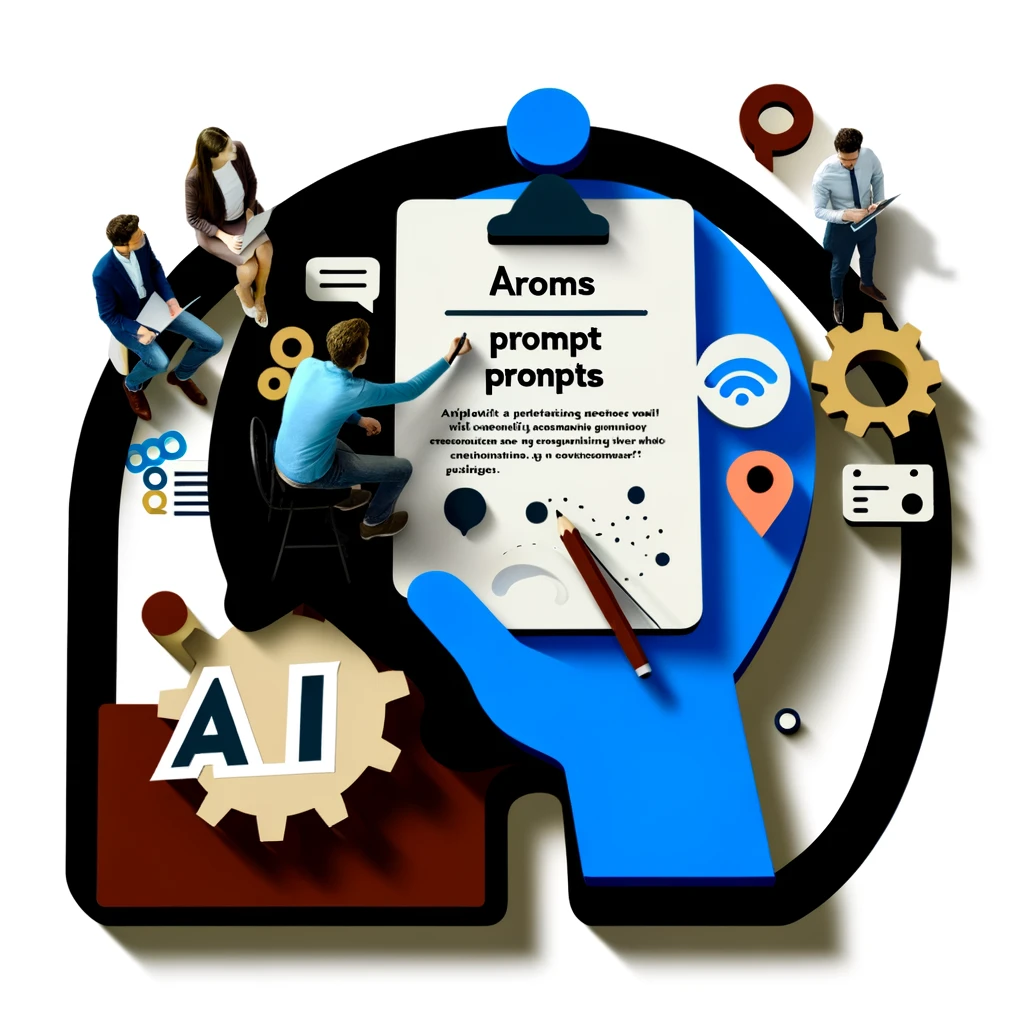
Basic Concepts and Terminology in Prompt Engineering
Let's get down to the basics. In this post, we'll cover key concepts and terminology that form the foundation of prompt engineering. Understanding these terms is crucial for navigating the rest of the course.
Introduction
Prompt engineering involves creating and refining prompts to guide AI systems in generating desired outputs. It’s essential to understand the fundamental concepts and terminology to effectively communicate with AI. This guide will take you through the foundational elements step-by-step, ensuring a comprehensive grasp of each component.
Key Terms and Concepts
Here are some key terms and concepts you need to know:
- Prompt: An instruction given to an AI to elicit a response. The prompt sets the stage for the interaction, guiding the AI on what kind of response is expected.
- Context: Surrounding information that helps the AI generate a relevant response. Context can include prior interactions, specific details, or background information relevant to the prompt.
- Model: The AI system itself, such as GPT-4, which processes the prompt and generates a response. Understanding the model's capabilities and limitations is crucial for effective prompt engineering.
- Output: The response generated by the AI based on the given prompt. The quality of the output is directly influenced by the clarity and specificity of the prompt.
Step-by-Step Explanation
Step 1: Understanding Prompts
Prompts are the core of prompt engineering. A well-crafted prompt clearly communicates the task to the AI. To create an effective prompt, consider the following:
- Be Specific: Vague prompts lead to vague responses. Specify the exact task or question. For example, instead of asking "Tell me about cats," you could ask "Describe the different breeds of domestic cats and their characteristics."
- Use Simple Language: Complex language can confuse the AI. Keep your instructions clear and straightforward.
- Include Examples: Providing examples can help the AI understand the format or type of response you're looking for. For instance, "List the capital cities of the following countries: USA, France, Japan."
- Set Clear Objectives: Make sure the AI understands the goal of the prompt. For example, "Explain the process of photosynthesis in plants, including the roles of sunlight and chlorophyll."
Example Prompts:
1. "Translate this sentence to French: 'Good morning, how are you?'"
2. "Write a short story about a young wizard discovering their powers."
3. "Summarize the key points of the article on climate change."
4. "Create a dialogue between two characters discussing their weekend plans."Step 2: The Role of Context
Context is crucial for providing the AI with the necessary background to generate accurate and relevant responses. Here’s how to effectively use context:
- Provide Background Information: Include any relevant details that the AI needs to know. For example, if asking about a historical event, provide the timeframe and key players involved.
- Reference Previous Interactions: If the conversation has multiple parts, referencing earlier parts can help maintain coherence. For example, "Based on our earlier discussion about renewable energy, explain the benefits of solar power."
- Set the Scene: Describe the situation or environment. For instance, "Imagine you are a travel guide in Paris. Describe a day tour for a family visiting for the first time."
- Include Specific Details: Adding details can make the context richer and more informative. For example, "Discuss the economic impacts of the Industrial Revolution in 19th-century Europe."
Example Prompts with Context:
1. "Translate this sentence to French: 'Hello, how are you?'"
Context: "The sentence is part of a friendly conversation."
2. "Write a short story about a young wizard discovering their powers."
Context: "The wizard lives in a magical world where every child discovers their powers at the age of 13."
3. "Explain the concept of natural selection in evolution."
Context: "Provide examples of how natural selection operates in different species."
4. "Create a marketing plan for a new product launch."
Context: "The product is an eco-friendly water bottle aimed at health-conscious consumers."Step 3: Understanding AI Models
Knowing the capabilities and limitations of the AI model you are working with is essential. Here's what you need to know about models:
- Capabilities: Models like GPT-4 can understand and generate human-like text based on the input they receive. They can handle a wide range of tasks, from simple queries to complex problem-solving.
- Limitations: AI models may sometimes generate incorrect or nonsensical answers. They also lack true understanding and consciousness, making them prone to errors if the prompt is ambiguous or misleading.
- Training Data: The responses of AI models are based on the data they were trained on. Understanding the scope of this data can help you craft prompts that align with the model's strengths.
- Feedback and Iteration: AI models learn from feedback. Use iterative refinement to improve prompt effectiveness over time.
Example of Model Capabilities and Limitations:
Prompt: "Describe the impact of the internet on global communication."
Output: "The internet has revolutionized global communication by enabling instant access to information, facilitating social connections, and supporting economic growth. However, it has also raised concerns about privacy and cybersecurity."
Limitation Example:
Prompt: "Explain why the sky is green."
Output: "The sky is blue due to the scattering of sunlight by the atmosphere. Green skies are rare and typically indicate severe weather conditions." (Note: The prompt was misleading, leading to a somewhat confused response.)Step 4: Crafting the Output
The output is the response generated by the AI. To ensure high-quality output, focus on the following:
- Review and Revise: Assess the AI’s response and refine your prompt if necessary. Iterative refinement helps in honing the prompt to achieve the desired outcome.
- Specify the Format: Indicate the desired format of the output. For example, "Provide a bullet-point summary of the main points discussed in the article."
- Feedback Loop: Use the AI’s responses to continuously improve your prompts. For instance, if the output is too vague, add more context or specificity to the prompt.
- Evaluate the Quality: Regularly evaluate the quality of the AI’s output. This helps in understanding the effectiveness of your prompts and making necessary adjustments.
Example of Refining Prompts:
Initial Prompt: "Explain photosynthesis."
Output: "Photosynthesis is the process by which plants make their food."
Refined Prompt: "Explain the process of photosynthesis in plants, including the roles of chlorophyll and sunlight."
Output: "Photosynthesis is the process by which plants convert light energy into chemical energy. Chlorophyll in the plant cells absorbs sunlight, which is used to convert carbon dioxide and water into glucose and oxygen."Additional Examples
Let's delve into more examples to solidify your understanding:
Example 1:
Prompt: "Generate a business plan for a startup company."
Context: "The company specializes in renewable energy solutions and aims to target small to medium-sized enterprises."
Model: GPT-4
Output: "The business plan for our renewable energy startup focuses on providing affordable and sustainable energy solutions to small and medium-sized enterprises. Our mission is to reduce carbon footprints while enhancing energy efficiency..."
Example 2:
Prompt: "Write a poem about the changing seasons."
Context: "The poem should reflect the beauty and transition from one season to another."
Model: GPT-4
Output: "From the blossom of spring's gentle embrace / To the golden hues of autumn's grace / Winter's chill and summer's blaze / Nature's cycle in endless praise."
Example 3:
Prompt: "Discuss the advantages and disadvantages of remote work."
Context: "Include aspects such as productivity, work-life balance, and company culture."
Model: GPT-4
Output: "Remote work offers numerous advantages, such as increased flexibility, better work-life balance, and reduced commuting time. However, it also presents challenges, including potential isolation, difficulty in maintaining company culture, and distractions at home..."
Example 4:
Prompt: "Describe the impact of artificial intelligence on healthcare."
Context: "Focus on diagnostic tools, patient care, and medical research."
Model: GPT-4
Output: "Artificial intelligence is transforming healthcare by improving diagnostic accuracy through advanced imaging tools, enhancing patient care with personalized treatment plans, and accelerating medical research by analyzing large datasets..."Conclusion
With these basics under your belt, you’re ready to delve deeper into the mechanics of prompt engineering. Understanding these foundational concepts will make it easier to grasp more advanced topics as we progress. As you continue, remember that the clarity, context, and specificity of your prompts are key to getting the best responses from your AI. Keep practicing, experimenting, and refining your prompts to become proficient in prompt engineering.

Structure of Prompts
Learn about the structure of prompts and how to construct effective instructions for AI systems. Understand the components of a well-crafted prompt.
View
Overview of the Learning Platform and Resources
Learn how to navigate the learning platform and make the most of the resources available in the Prompt Engineering Masters course. A comprehensive guide to get you started.
View


